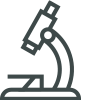Assistant Professor, Pathology and Laboratory Medicine
Milton E. Cassel Scholar
B.S.E., Princeton University
M.D., Ph.D., Johns Hopkins University School of Medicine
Genes make up only 2 percent of the human genome. In contrast, half the genome is around two million copies of the same few transposon sequences, which for years were relegated as “junk DNA.” Transposons are virus-like, self-copying DNA parasites. In humans, there is one class of active transposon, called LINE-1. Among hundreds of thousands of inactive copies and fragments, humans inherit 150–200 active copies of LINE-1, which are repressed in healthy tissues by multiple redundant mechanisms. In cancer, autoimmunity, and diseases of aging such as Alzheimer’s, LINE-1 escapes repression and contributes to disease pathology by mutating the genome and causing inflammation. The goals of the Taylor Lab are to 1) understand how LINE-1 works in detail and how much of a contribution it makes in these diseases, 2) develop new strategies to target LINE-1 for prevention and therapy, and 3) develop new diagnostics to find disease earlier, where interventions are most effective.
